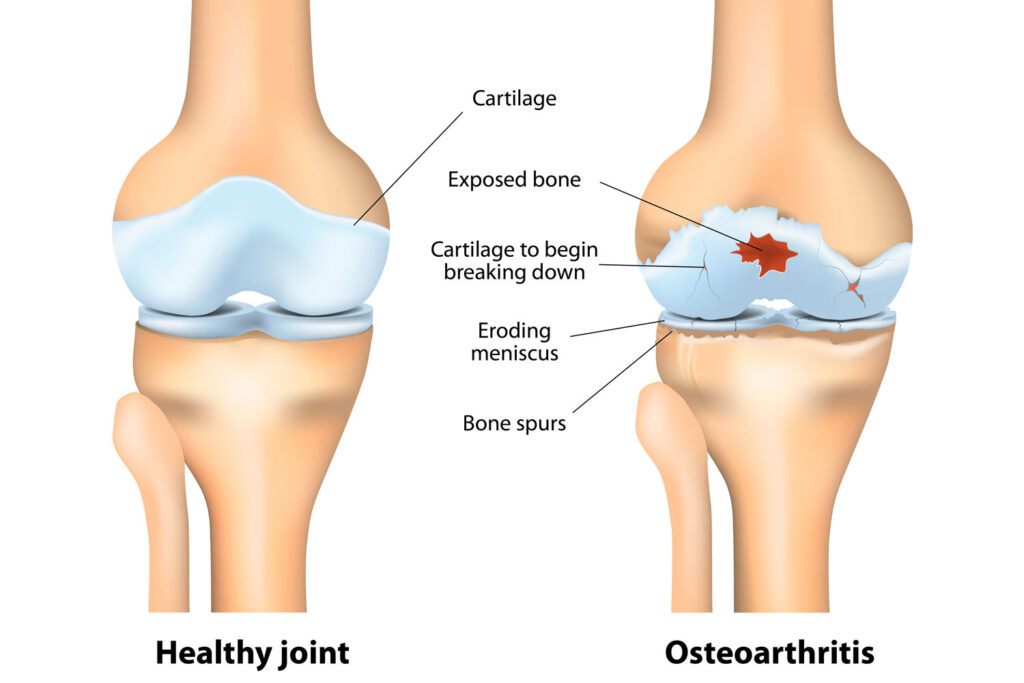Osteoarthritis ICD 10: A Complete Guide to Coding and Care

Osteoarthritis icd 10 is the most common form of arthritis, affecting millions of people around the world. Sometimes called “wear-and-tear arthritis,” it occurs when the protective cartilage cushioning the ends of bones gradually wears down, leading to pain, stiffness, and loss of mobility.

For healthcare providers, patients, and insurers alike, understanding Osteoarthritis ICD-10 codes is essential. These codes allow for accurate documentation, billing, and epidemiological tracking of the disease. This blog will provide a comprehensive look at osteoarthritis, its risk factors and symptoms, and how it is classified using ICD-10 coding.
What Is Osteoarthritis?
Osteoarthritis is a chronic, degenerative joint disease. Unlike inflammatory forms of arthritis such as rheumatoid arthritis, OA primarily results from mechanical wear and tear on the joints. Over time, cartilage breaks down, bones rub against each other, and joint structures undergo changes that cause pain and reduced movement.
OA most commonly affects:
-
Knees
-
Hips
-
Hands (especially finger joints and base of the thumb)
-
Spine
It develops slowly, but symptoms can worsen over time and eventually interfere with daily activities.
Symptoms of Osteoarthritis
While symptoms vary depending on the joint involved, common signs of OA include:
-
Pain that worsens with activity and improves with rest
-
Joint stiffness, particularly after waking up or sitting still for long periods
-
Swelling and tenderness around the affected joints
-
Reduced flexibility and range of motion
-
Grating sensation (crepitus) when moving the joint
-
Bone spurs forming around the joint
For some people, symptoms remain mild, while for others, they progress to severe pain and disability.
Risk Factors
Several factors increase the likelihood of developing osteoarthritis, including:
-
Age – Risk rises as people get older.
-
Gender – Women are more likely to develop OA, especially after menopause.
-
Obesity – Extra weight places additional stress on weight-bearing joints.
-
Joint injuries – Sports, accidents, or occupational injuries can accelerate joint wear.
-
Genetics – Family history may increase susceptibility.
-
Repetitive stress – Certain jobs or sports with repetitive movements raise risk.
Diagnosing Osteoarthritis
Diagnosis is typically based on:
-
Medical history – Doctors evaluate symptoms, risk factors, and lifestyle.
-
Physical examination – Checking for swelling, tenderness, and range of motion.
-
Imaging tests – X-rays show cartilage loss, bone spurs, and narrowed joint spaces; MRIs may detect early changes.
-
Lab tests – Used mainly to rule out other forms of arthritis such as rheumatoid arthritis or gout.
Once diagnosed, clinicians must document the condition properly, which brings us to ICD-10 coding.
ICD-10 Coding for Osteoarthritis
The International Classification of Diseases, 10th Revision (ICD-10) provides a structured system for coding osteoarthritis.
Osteoarthritis is coded under M15–M19 categories, depending on location and type.
Common ICD-10 Codes for Osteoarthritis
-
M15.0 – Primary generalized (osteo)arthritis
-
M15.9 – Polyosteoarthritis, unspecified
-
M16.0 – Primary osteoarthritis of hip, bilateral
-
M16.9 – Osteoarthritis of hip, unspecified
-
M17.0 – Primary osteoarthritis of knee, bilateral
-
M17.9 – Osteoarthritis of knee, unspecified
-
M18.0 – Primary osteoarthritis of first carpometacarpal joint (base of thumb)
-
M18.9 – Osteoarthritis of first carpometacarpal joint, unspecified
-
M19.90 – Unspecified osteoarthritis, unspecified site
Example Scenarios:
-
A patient with osteoarthritis in both knees → M17.0
-
A patient with hip OA, side not specified → M16.9
-
Generalized osteoarthritis affecting multiple sites → M15.0
Correct coding ensures accurate records, proper billing, and better epidemiological data for research and public health planning.
Treatment Options for Osteoarthritis
While osteoarthritis cannot be cured, treatments focus on managing symptoms, improving joint function, and enhancing quality of life.
1. Lifestyle Modifications
-
Weight management to reduce stress on joints
-
Regular low-impact exercise (swimming, walking, cycling)
-
Use of braces, canes, or supportive shoes
2. Medications
-
Pain relievers: Acetaminophen, NSAIDs (ibuprofen, naproxen)
-
Topical creams/gels with anti-inflammatory effects
-
Corticosteroid injections for temporary relief
-
Hyaluronic acid injections in knee joints for lubrication
3. Physical Therapy
-
Strengthening muscles around joints
-
Improving flexibility and balance
-
Developing customized exercise programs
4. Surgical Interventions
-
Arthroscopy to smooth damaged cartilage
-
Osteotomy to realign bones
-
Joint replacement (hip, knee, or shoulder) for severe cases
Living With Osteoarthritis
Living with OA often requires a long-term management plan. Patients can improve quality of life by:
-
Staying physically active with low-impact activities
-
Eating a balanced, anti-inflammatory diet
-
Practicing joint-protection techniques
-
Engaging in stress-reduction practices (yoga, meditation)
-
Seeking emotional support, since chronic pain can affect mental health
Importance of ICD-10 in Osteoarthritis Care
Accurate ICD-10 coding is crucial for:
-
Insurance reimbursement – Ensuring proper claims processing.
-
Tracking patient outcomes – Allowing providers to follow disease progression.
-
Public health research – Identifying trends and risk groups.
-
Standardized communication – Ensuring consistency across healthcare systems.
Incorrect or vague codes (such as “unspecified”) may lead to claim denials or incomplete patient records.
Final Thoughts
Osteoarthritis icd 10 is a common yet serious condition that can significantly impact daily life. While it cannot be reversed, effective treatment and lifestyle changes can slow its progression and relieve symptoms.
From a medical management perspective, Osteoarthritis ICD-10 codes (M15–M19) are essential for documenting disease location and type accurately. This ensures better patient care, smoother insurance processes, and more reliable health data.
By combining proper coding with patient-centered treatment, healthcare providers can offer the best possible outcomes for individuals living with osteoarthritis.



